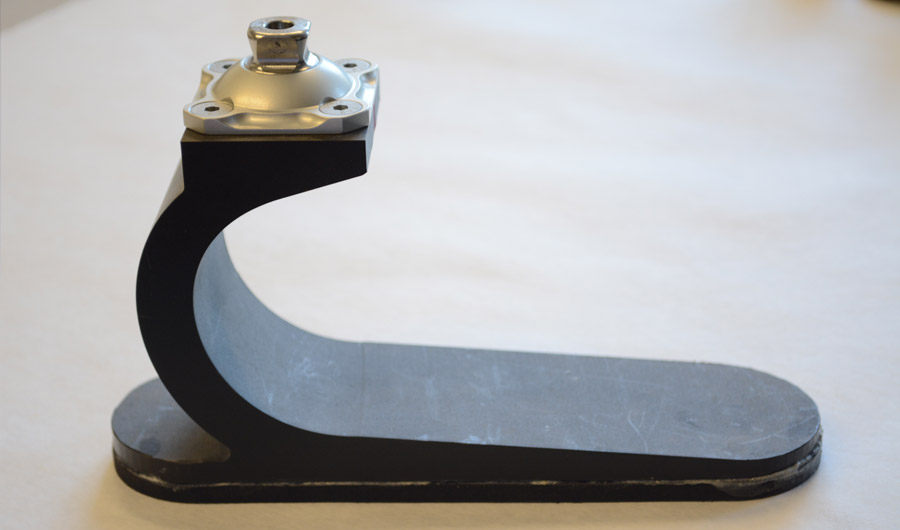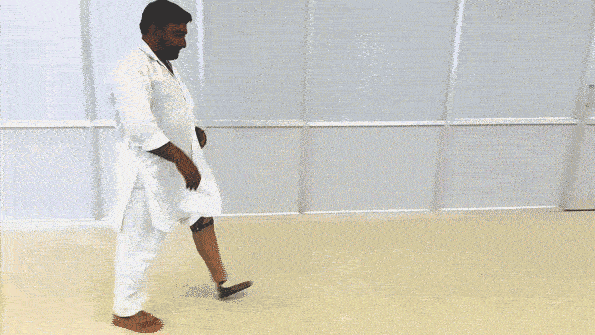A Better Prosthetic Foot for the Developing World

Image credits: Courtesy of the researchers.
(Inside Science) -- Losing a leg can be profoundly debilitating. And it's especially so for those in developing countries, where most of the world's amputees live. Up to 95 percent of an estimated 30 million amputees in developing nations don't have access to prosthetics.
A new type of prosthetic foot, developed by researchers at the Massachusetts Institute of Technology in Cambridge, Massachusetts, may help alleviate some of the need. The new design, described in three papers published over the last year, is durable and cheap to make -- yet may work just as well as more expensive designs.
The need for affordable prostheses
Some of today's state-of-the-art prosthetic technology -- robotic limbs, exoskeletons, and even mind-controlled arms -- seem to come straight from science fiction. Even standard prostheses in wealthy nations are complex, costing thousands to tens of thousands of dollars and requiring multiple fittings and tests, and fine-tuning with a specialist. Such expertise and infrastructure typically don't exist in the developing world and the costs are far beyond the reach of most people, whose incomes can be less than $300 a year.
Organizations such as Bhagwan Mahaveer Viklang Sahayata Samiti, a group based in India that makes a prosthesis called the Jaipur Foot, have tried filling the need. They have been distributing more than 20,000 of their prostheses every year -- and have distributed more than half a million since 1975 -- throughout developing nations. Their foot costs less than $50 to make, is durable enough to last a few years, and roughly looks like a real one. Despite its success, the design is more than 50 years old, and the fact that it's handmade leads to inconsistent quality. One study found that 56 percent of the Jaipur feet had poor fit or craftmanship.
In 2011, the makers of Jaipur Foot approached Amos Winter, a mechanical engineer at MIT, to help improve their device. Working with the organization and with amputees in India, Winter came up with a prosthetic foot that’s cost competitive with the original Jaipur Foot. But what's unique is a new design framework that predicts what prosthesis would best fit a person based on just a few attributes, said Winter. All you need is a person's weight, feet size and leg length to make a selection in a matter of seconds, Winter said. Getting such a good fit so quickly and easily with a passive prosthetic foot is “a grand slam,” he said.
Replicating a natural gait
The design is based on an approach that minimizes the discrepancy between an able-bodied walking gait and one with a prosthetic foot. Using a computer model and data of the forces on the joints in able-bodied limbs, Winter and his colleagues calculated the motion of a lower leg fitted with a prosthetic foot. They compared this predicted motion to an able-bodied person's, and used a computer algorithm to adjust the prosthetic foot's geometry and stiffness to match the able-bodied gait as much as possible.

Courtesy of the researchers
What's powerful about this framework, Winter said, is the ability to predict the motion of the lower leg and to explain why one particular prosthesis is better -- allowing researchers to improve designs even more. Before, traditional prostheses were designed by trial and error, and there was no way to predict and quantify how the design of a foot can affect its performance.
Conventional approaches try to recreate the ankle, requiring complex and expensive devices. But the new approach allowed the researchers to treat the foot as a black box. All the foot has to do is to produce a motion at the knee that's most similar to that of an able body. "If the knee does the right thing, then who cares about what happens downstream," said Elliott Rouse, a mechanical engineer at the University of Michigan who was not involved in the research. "That's the key innovation." Because the foot doesn't have to replicate a real one, the researchers could use a much simpler and cheaper design.
In the end, the engineers built a prosthetic foot from a single piece of nylon that flexes like a spring.
Winter's approach focuses on the angular motions around joints. Although some other aspect of a gait could turn out to be more important, the new technique shows potential, Rouse said. "It's a really promising approach," he said. "It's really exciting in that it can be designed and manufactured at costs and scales that are very different than today's technology."
Having tested the foot in India, the researchers are now partnering with the shoemaker Vibram to make a treaded, foot-shaped cover to encase the nylon prosthesis. They will soon begin testing the more lifelike foot in the coming months, Winter said, and hopefully bring it to market in the next year or two.

